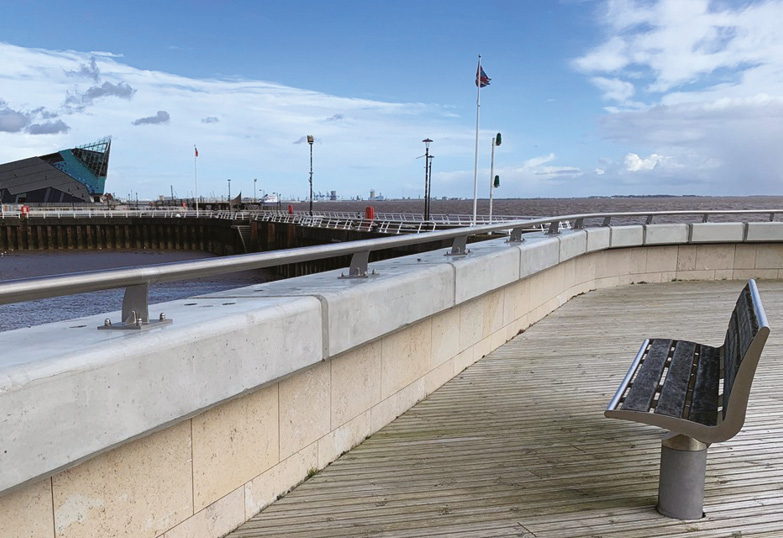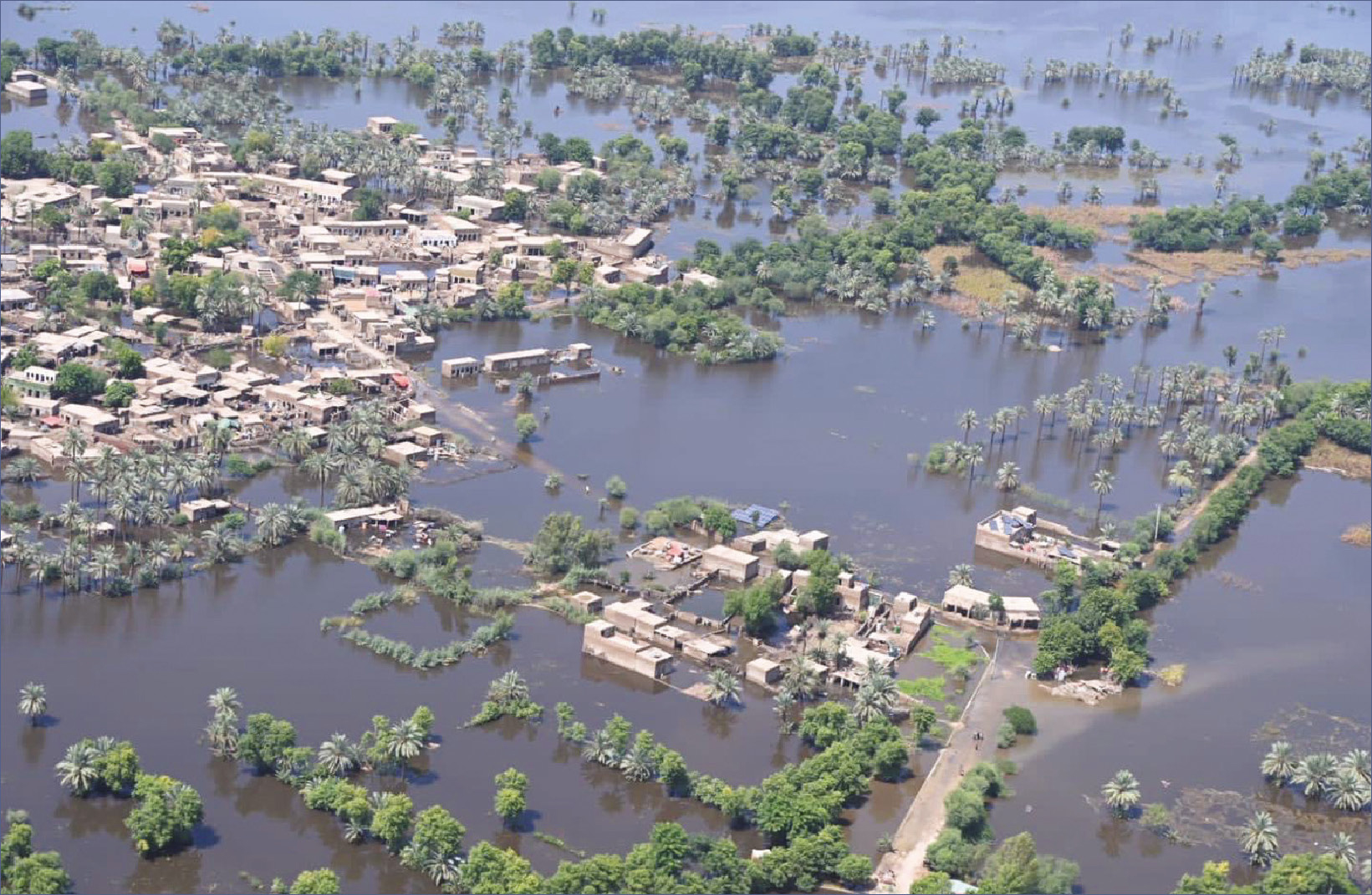FST JOURNAL
Climate Change
DOI: https://www.doi.org/10.53289/JMNX9078
Financing our net zero future
Emma Howard Boyd

Emma Howard Boyd CBE is Chair of the Green Finance Institute and UN Global Ambassador for Race to Zero and Race to Resilience. She was Chair of the Environment Agency and an ex-officio Board member of the Department for Environment, Food and Rural Affairs from 2016 to 2022. She was the UK Commissioner to the Global Commission on Adaptation from 2018 until January 2021.
The future that scientists and climate activists have long warned about has been a reality for some of the most climate-vulnerable countries for decades. This future is now becoming a reality for all, with huge uncertainty and change at local, national and global levels.
On 22 July, the UK hit a milestone when, for the first time, temperatures of 40˚C were confirmed and more than 2,800 excess deaths were recorded. Since then, a third of Pakistan has been flooded, California has been pushed closer to blackouts by heatwaves and Europe has suffered spectacular wildfires. The Yangtze River in China has dried up, nine million people were told to evacuate as super-typhoon Nan Madol hit Japan, Hurricane Fiona wreaked havoc from the Caribbean to Canada, while more than 600 people died and 1.3 million were displaced from their homes in flooding that hit 33 of Nigeria's 36 states and the capital. That is only highlighting a fraction of the climate shocks that are threatening lives and livelihoods around the world.
The V20 group of finance ministers from 58 climate-vulnerable economies estimate that 20 years of climate impacts have cost their countries $525 billion. Developing countries face a 2030 bill ranging from $290-580 billion, according to a 2019 study. African nations are losing 5-15% of GDP annually due to impacts says the Africa Development Bank. Leading insurer AON warns that the swathe of impacts in 2022 clearly supports the conclusions of the most recent IPCC assessment.
The science could not be clearer: 40% of the world's population is highly vulnerable to climate change. This is no longer a distant threat but something that is happening now. We must scale up and accelerate a just transition towards cheaper, more accessible, more secure zero-carbon energy.
2022 also represents a turning point for the Food and Agriculture agenda as well as our relationship with nature. Surging food prices are of particular concern to Africa, Asia, and the Middle East which depend heavily on wheat imports.
 A section of the Humber estuary at Hull, UK, showing flood defence improvements carried out by the UK Environment Agency
A section of the Humber estuary at Hull, UK, showing flood defence improvements carried out by the UK Environment Agency Positive developments
Net zero targets now cover over 90% of the global economy. Yet less than one-fifth of the net-zero targets set by national and sub-national governments – and only a third of those from the largest public corporates – actually meet science-aligned criteria, according to the Net Zero Tracker.
The Breakthrough Agenda was designed to strengthen international collaboration where it is most needed. At COP26, leaders of 44 countries plus the European Union, representing over 70% of global GDP, committed to work together to make clean technologies and sustainable solutions the most affordable, accessible and attractive option in high-emitting sectors before the end of this decade. The first phase of work focusses on five of those sectors, accounting for over 50% of current emissions: power, hydrogen, road transport, steel and agriculture. In each of these, there is growing investment and solutions. However, world emissions continue to rise and progress is not yet fast enough to meet the goals that were agreed.
Corporate commitments are also in the spotlight but alongside these are massive green finance opportunities. One way to envisage green finance is to see it as a direct application of science to financial decision-making. This is a critically-important perspective for both the green finance and scientific communities to emphasise. Yet, investing and lending in line with the scientific consensus on both climate change and the depletion of our natural resources is increasingly under attack from those who portray it as an indulgence.
Such ‘indulgence’ was tolerable, they say, when the basic metrics of corporate returns were supported by low levels of inflation, low corporate tax rates, and historically low interest rates. Those conditions are now changing and markets are correcting. Hence the siren voices to get back to the day job of delivering high risk-adjusted returns, instead of focussing on environmental, social and governance matters. Voices with considerable influence are increasingly comfortable voicing such views in public.
 A section of the Humber estuary at Hull, UK, showing flood defence improvements carried out by the UK Environment Agency
A section of the Humber estuary at Hull, UK, showing flood defence improvements carried out by the UK Environment Agency Net zero transition is a highly capital-intensive business. To date, much energy has been focussed on secondary market considerations which only indirectly impact the availability and cost of capital for investments in new technologies and new projects. Equal vigour is now needed on bank lending-bond issuance, initial public equity offerings, private equity and venture capital: that is, direct investment in the real economy. This will mean radical collaboration between all aspects of the financial ecosystem, far more emphasis on public capital and on development finance institutions, as well as the use of philanthropic capital to lower the risk for commercial mainstream capital to redeploy monies towards sustainable opportunities.
Adaptation and resilience
Everyone knows that investing in adaptation and resilience works. In 2021, the Environment Agency completed the Government's £2.6 billion, six-year capital flood programme – on time and on budget. That comprises more than 700 flood schemes, protecting more than 300,000 homes and nearly 600,000 acres of agricultural land, as well as thousands of businesses and major pieces of infrastructure.
The Government has increased the budget for its new programme to a record £5.2 billion. It will be important that this is ready for the climate events we know are locked in. The future will also require adaptation standards, not just in the UK but globally. We do not currently know what the optimum level of investment is for UK climate adaptation, nor how this should be balanced between public and private sectors. So I hope the UK Treasury will be asked to commission a review of the economics of resilience. This would consider the costs and benefits of resilience measures and the
balance between public and private investment. Its conclusions would help establish a national ambition for climate resilience embedded in all Government Departments.
Initiatives like the Coalition for Climate Resilient Investment are working to address the massive gap in financing resilience. The Physical Climate Risk Assessment Methodology (PCRAM) is a global practitioners’ guide that supplies practical tools to identify and assess the resilience of infrastructure assets. Resilience becomes a core component of innovative strategic decision making.
If we can align everything we are currently doing, this decade will be the point at which we unlock a just, resilient and sustainable path to prosperity for billions of people around the world.
